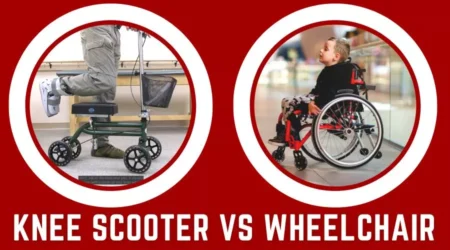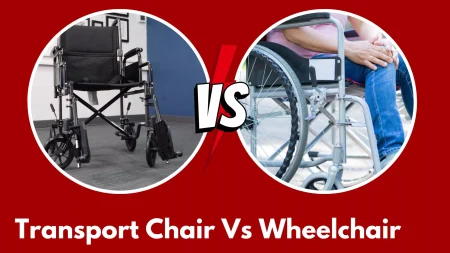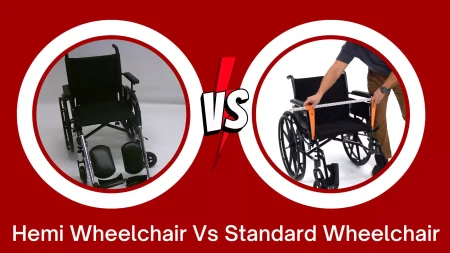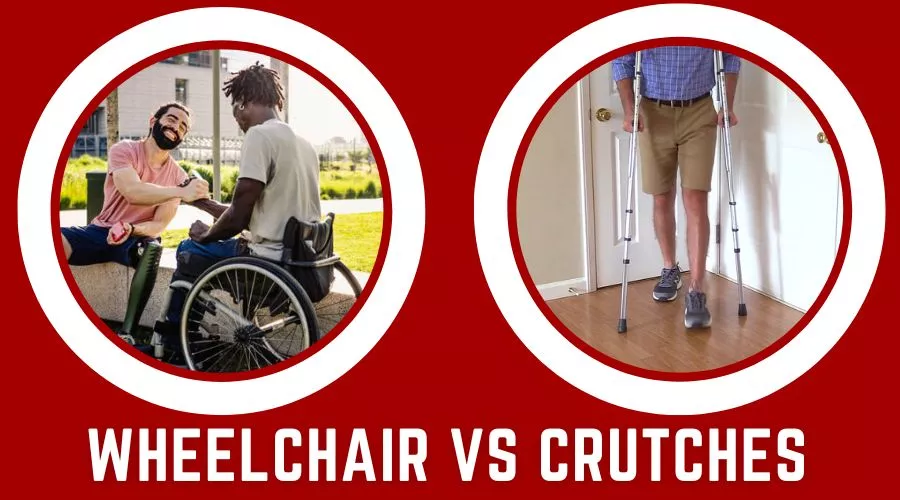
Did you know that millions of people use wheelchairs and crutches all around the world?
People who require a mobility aid frequently debate whether to use wheelchairs or crutches.
Crutches, according to our research, are more appropriate for short-term care or less serious mobility disorders.
Wheelchairs, on the other hand, are appropriate for long-term care and significant medical conditions.
The main difference between a wheelchair vs crutches is that a wheelchair is a motorized device, so it requires less effort to move around as compared to crutches.
Crutches offer less stability than a wheelchair or knee walkers. This means it can be hard to use them if it’s slippery from rain or snow. Additionally, while proper fit should reduce pain, the pressure can cause shoulder, arm, or hand pain.
What Is A Wheelchair?
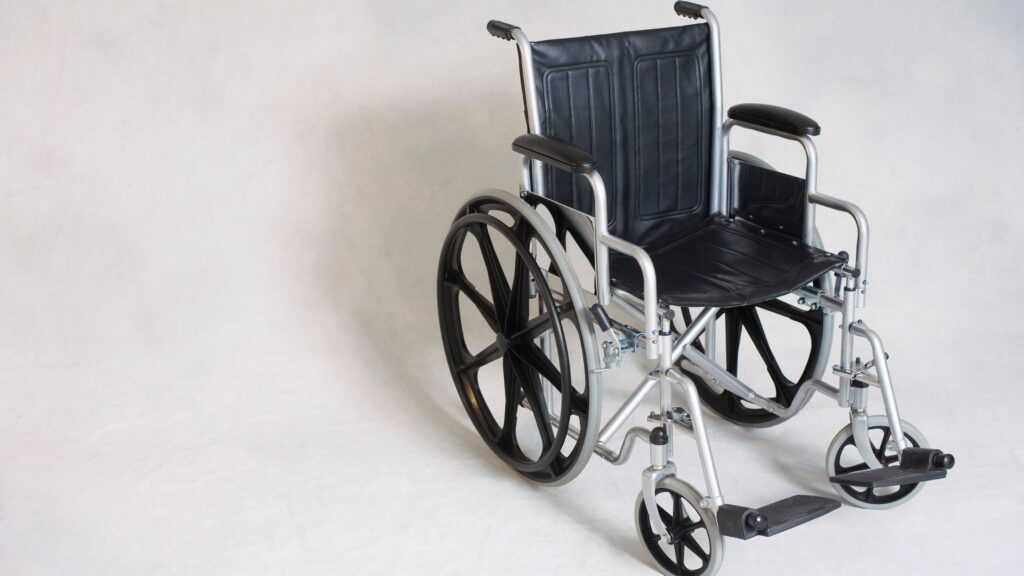
A wheelchair is a chair with wheels that is used by people who cannot walk or have difficulty walking.. Wheelchairs can be manual or powered.
Manual wheelchairs are pushed by the person using them, while powered wheelchairs are motorized and can be controlled by the person using them or by someone else.
Wheelchairs enable people with walking difficulties to get around and improve their quality of life (e.g. a person with spinal cord injuries resulting in quadriplegia or paraplegia, muscular dystrophy, etc).
Wheelchair mobility gives users the chance to go to school, work, do social things, and use services like healthcare.
A good wheelchair helps the user’s physical health and quality of life by reducing common problems like pressure sores, slowing the progression of deformities, and making it easier to breathe and digest.
What Are Crutches
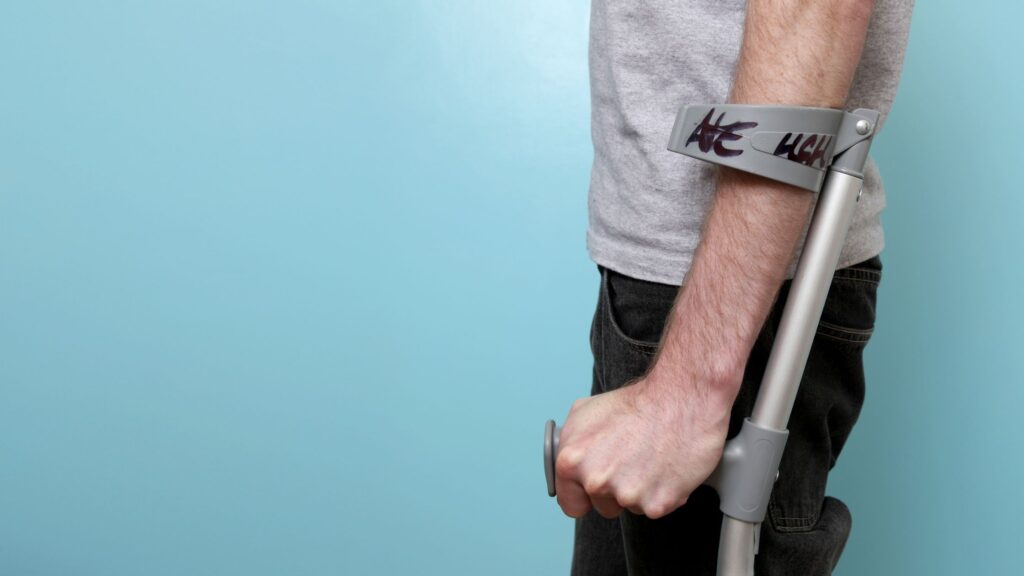
Crutches are devices that are used to provide support and assistance to people who have difficulty walking.
They are usually made of wood or metal and consist of two parts: a handle and a support.
The handle is held in place by the person’s armpit, and the support rests under the person’s forearm.
Crutches are used when someone has a broken bone or is recovering from surgery.
A Comparison Of Wheelchairs vs Crutches
After doing a lot of research, I have compared crutches and wheelchairs so that you can choose the right one for you.
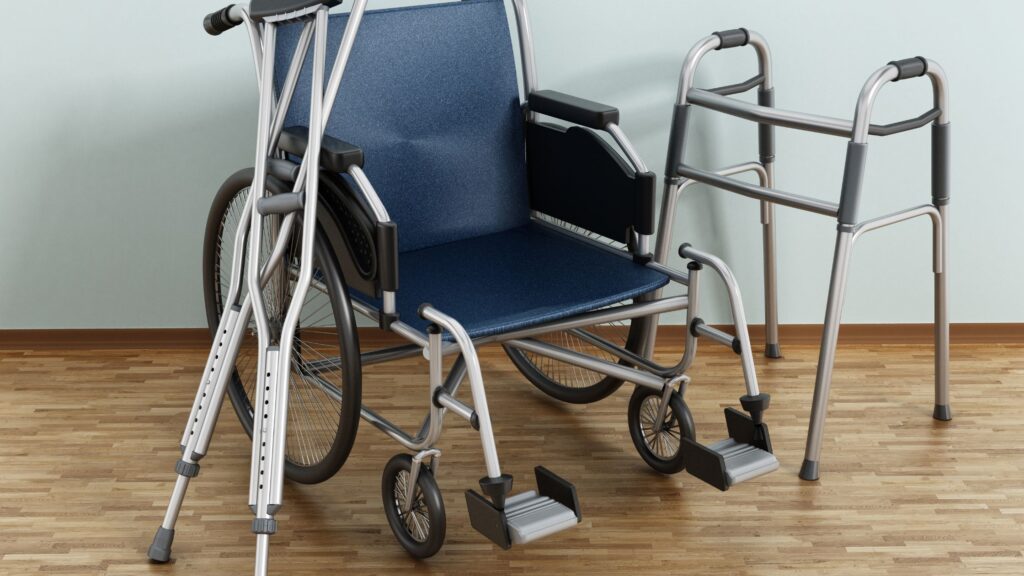
Here are 7 Different Factors:
Body Strength Between Crutches and Wheelchairs
The majority of individuals can develop the upper-body strength required for crutches or a wheelchair. But not everyone has the time or the inclination to.
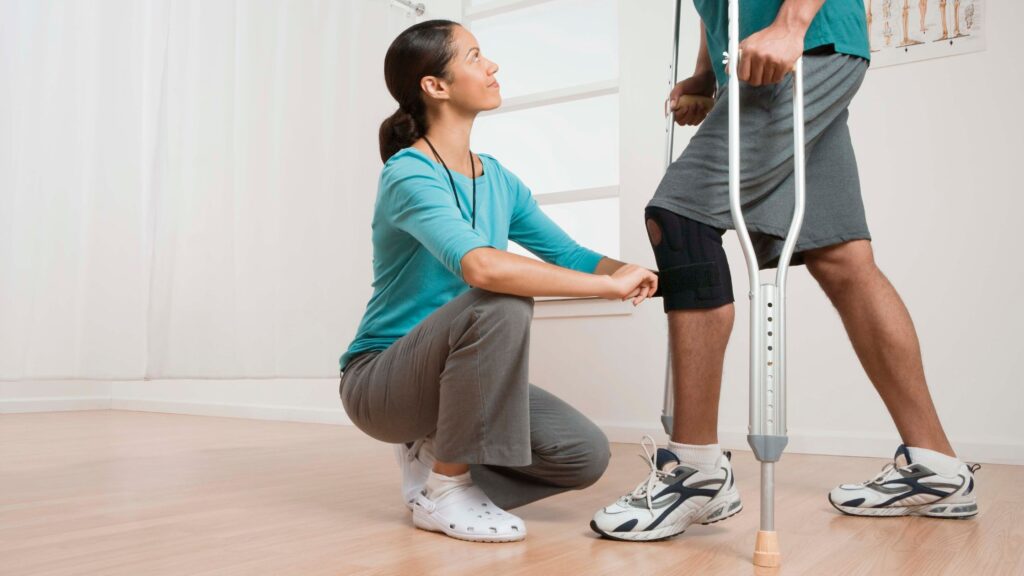
If physical strength plays a significant role in your decision, you may want to investigate your alternatives.
For instance, you may prefer crutches if you need a mobility aid for only a short or moderate amount of time.
With crutches, you will not require as much muscle development. If you have a serious illness or difficulty moving your legs, a wheelchair is a great superior option.
You must continue to increase muscle strength since you will continue to use it indefinitely.
If you have difficulty building muscle, you can pick a fast electric wheelchair. But, as was already mentioned, these are a little expensive.
Weight Restrictions Of Electric Wheelchairs vs Crutches
Arguably, weight limitations are one of the most crucial factors. When choosing between crutches and wheelchairs, your weight must be considered.

If you choose a mobility device with the incorrect weight range, you may sustain further injuries.
It is thought that the majority of crutches can support between 150 and 300 pounds. Few firms manufacture crutches that can support someone weighing more than 300 pounds.
This is because crutches with a weight capacity of 300 pounds or higher need a more robust construction. They must essentially be safe for heavier users.
Most businesses are unwilling to pay extra for crutches with a weight restriction of above 300 pounds.
The weight restriction for lightweight wheelchairs is between 200 and 250 pounds.
Weight limitations for conventional wheelchairs range from 250 to 350 pounds. Likewise, heavy-duty wheelchairs may support more than 700 pounds of weight.
Weather Resistance Of Crutches Vs Manual Wheelchair
Unfortunately, most crutches and wheelchairs are not completely watertight. Crutches are more frequently waterproof. They have fewer parts that can be harmed by sunshine and water.

Crutches, for instance, are designed to be more durable since some may be used for trekking and walking on rough terrain.
Most crutches also have waterproof padding on them. On the other hand, wheelchairs often don’t have seats that are waterproof.
They also feature textiles that, if not dried properly, might develop mold.
The wheelchairs’ and crutches’ construction and material choices will determine how weather-resistant they are.
Long-Term Utility Of Both Mobility Devices
Most of the time, people use wheelchairs more often and for longer periods of time than they do crutches.
This is due to the fact that crutches are often far less stable than wheelchairs. They are frequently made to endure longer.
But if you purchase a set of crutches that are built to last, it doesn’t follow that you won’t be able to use them frequently.
Already, the average life span of a wheelchair is thought to be four years and four months.
If often used, manual ones can last up to five years. Crutches of higher quality often last the same length of time. But less expensive options don’t last as long.
Comfort And Convenience Of Wheelchairs And Crutches
The majority of individuals claim that a wheelchair is more comfortable and handy than crutches.
This is particularly true if you have household assistance.

Both electric wheelchairs are much more comfortable than the ones you push yourself. If someone is pushing you, it’s also because they are more sensible.
You won’t need to use a lot of physical strength while using electric versions. Already, you won’t have to ask them for help too often.
Crutches, meanwhile, could be difficult to use at first. This is especially true if you suffer from a chronic illness rather than a recent injury.
Role Of Crutches and Wheelchairs In Everyday Applications
Your lifestyle and level of mobility will determine whether crutches or a wheelchair are more appropriate for daily use.

If your range of motion is restricted, a wheelchair is preferable for daily tasks.
With a wheelchair, you can more easily go to the restroom, prepare food, do some washing, and perform other duties.
To perform these tasks while using crutches, you need some advice.
Do you have a busy lifestyle and just occasionally require a mobility aid? If so, you should think about using crutches on a regular basis.
You can still perform a lot of what you used to do while using crutches. This is due to the fact that getting used to living on crutches only takes a few weeks or months.
Price Difference Between Power Wheelchair And Crutches
When deciding between crutches and wheelchairs, the cost is a crucial factor to take into account.
You may research the cost of wheelchairs and transport chairs or crutches online or in person.
According to estimates, the typical cost of a pair of underarm crutches is between $20 and $50, while the cost of forearm crutches ranges from $30 to $200.
The brand and materials used will affect how much crutches cost. But wheelchair costs vary more widely. An average wheelchair costs between $500 and $1,500.
The type of wheelchair you select, though, will decide whether it is affordable or pricey. Most manual wheelchairs cost between $100 and $200.
Final Words
Depending on whether you have temporary or permanent mobility limitations, you might need crutches or a wheelchair.
A lot will also depend on how much money you have and how often you want to use your mobility aid.
Crutches are preferable for those who need them for a short- to medium-term period of time.
Or they’re fantastic for people who are eager to learn how to use crutches and have the upper body strength to do so.
But over time, wheelchairs are best for people with limited mobility. They are ideal for people whose severe injuries prevent them from walking.
Do you have any remaining doubts about using crutches and wheelchairs? you can take help with this video.

